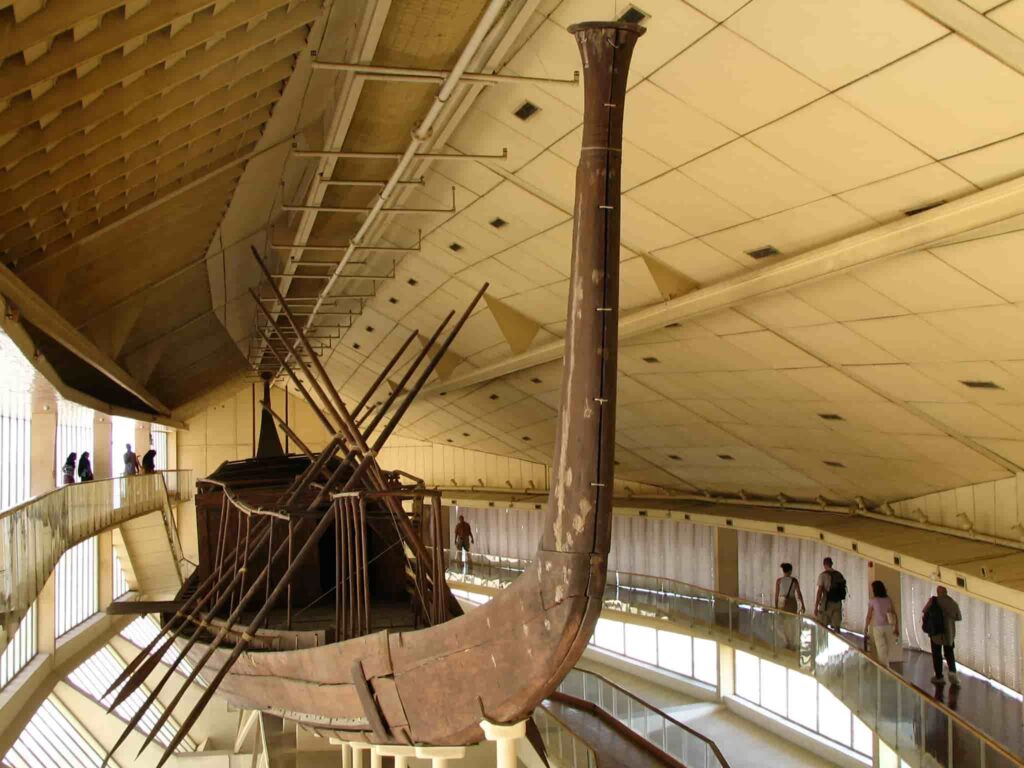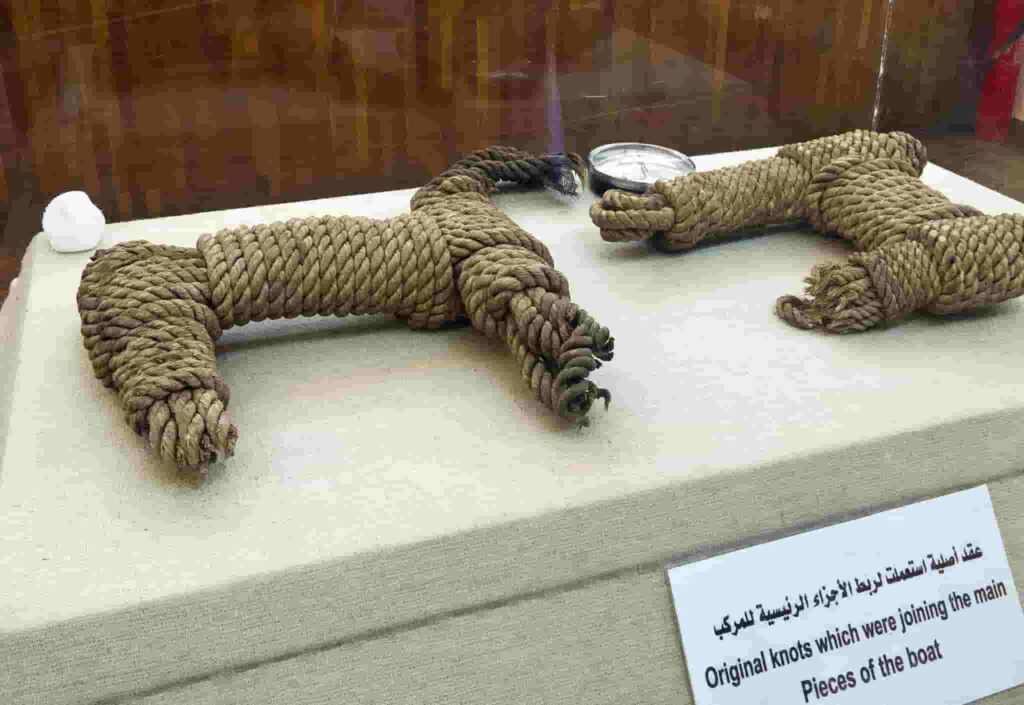Around 4,500 years ago, a branch of the Nile once meandered through the area that is now the Giza Plateau. This ancient channel was deep enough to accommodate boats carrying significant loads, such as limestone blocks from nearby Tura and even granite from the quarries of distant Aswan. Over nearly three decades, with the collective effort of possibly 100,000 workers, Pharaoh Khufu’s monumental tomb rose to defy the ages.
It was the Nile itself that would ultimately carry Khufu to his eternal abode. He embarked on his final journey aboard a sacred vessel, possibly crafted specifically for his burial rites, meant to accompany him as he joined the sun god Ra in the celestial voyage across the sky from dawn until dusk.
The construction of Khufu’s boat was an architectural marvel, assembled from the outside in with cedar planks meticulously fitted together. Ropes and natural fibers bound the planks without a single nail.
Once exposed to water, the esparto grass bindings tightened, and the wood swelled, creating an increasingly watertight seal as the boat took shape—a craft as enduring as the legacy it carried.
The Final Voyage of Pharaoh Khufu
Khufu’s funerary vessel was an impressively large construction for its era, measuring about 43 meters in length, nearly six meters in width, and with a draft of 1.5 meters.
Built for the placid waters of the Nile, the boat was powered by oars, with ten rowers at the front and a helmsman steering the vessel with two large paddles at the rear. Some theories suggest that, during the funeral rites, this majestic boat was towed by another craft.
Nearly half of the boat was devoted to a chamber meant solely for the Pharaoh. This private space was enclosed by sturdy wooden walls, with only a couple of doors and no windows, creating a dim, secluded interior.
The chamber inside was arranged in two sections: a smaller antechamber and a larger main hall. Although the specifics are unknown, it’s likely that certain luxuries adorned the space.
Cedar columns with palm-shaped capitals, accented with copper, supported the ceiling, while door bolts offered added security. Supports that extended slightly above the cabin likely held dampened reed mats to provide cooling for Khufu on his symbolic passage.
After completing its sacred role in Khufu’s burial, the boat was carefully dismantled and placed in a trench alongside the south face of the Great Pyramid. Stored like an immense puzzle of planks, frames, and rope, it was buried under 41 massive sandstone blocks, sealed with mortar and plaster. There, untouched by time, it rested for 4,500 years, hidden from the world.
A Timeless Puzzle
The first royal barge of Pharaoh Khufu was discovered almost by chance in 1954.
Massive stone slabs covering the pit had to be carefully lifted with hoists. Once these were removed, archaeologists were met with an extraordinary sight: an ancient vessel, remarkably well-preserved. The wood had survived thousands of years with minimal wear, and the ropes appeared freshly woven.
However, reconstructing the ship presented a unique challenge. Over 1,200 individual pieces lay before them, most looking similar, and there were no blueprints or assembly guides. Only small markings hinted at each piece’s place—whether at the bow or stern, port or starboard.
The task was entrusted to Hag Ahmed Yussef, an Egyptian with two decades of experience working on Theban tombs and expertise in ancient woodwork, though he had never restored a vessel. Nobody had; this discovery was unprecedented.
A brick structure was built next to the pit, functioning both as storage for the parts and an assembly area. Simple equipment was used to test piece alignments. In the 1960s, technology was limited, so nearly everything was done by hand, with immense care taken to avoid damaging the fragile wood.
For seventeen years, Yussef and his team tackled the daunting puzzle. They stabilized each timber, meticulously documented every plank, consulted traditional boat builders, crafted scale models, restored damaged pieces, and assembled the barge into a cohesive structure. The hull alone had to be built and taken apart four times before the final configuration emerged.









